
2008 International Respiratory Congress Advance Program |
![]()

Important Date
- Oct 31
Discounted registration ends
![]()
Sunday, December 14
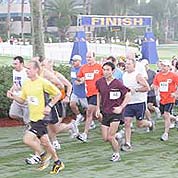
Roche 5K Fun Run and Walk
Sunday, Dec 14
7:00 A.M.
Plenary Session
8:30 A.M.–9:20 A.M.
AARC Annual Business Meeting
Toni Rodriguez EdD RRT AARC President/Presiding
The Annual Meeting of your professional association. The 2009 AARC Officers, Board of Directors, and House of Delegates officers are installed. Reports from the AARC leadership are presented. The meeting concludes with the installation and address of the 2009 President, Tim Myers RRT-NPS.
8:00 A.M.–6:00 P.M.
![]()
31st National Competition
Sputum Bowl® Preliminaries
Jim Fenstermaker RRT FAARC
Placentia CA/Presiding
Teams from the AARC state affiliates compete in the preliminary competitions. The top four teams will advance to the Finals on Monday evening, Dec 15, along with the Student Sputum Bowl finalists.
Plenary Session
9:30 A.M.–10:20 A.M.
35th Donald F Egan Scientific Memorial Lecture
Supported by an unrestricted
educational grant from

This lecture provides an overview of in-depth information about dynamic aspects of pulmonary physiology, pulmonary medicine, or clinical respiratory care. The lectureship is extended to a recognized world-class participant in the area of interest—investigator, clinician, or academician.
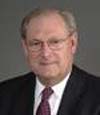
David Pierson
The Cardiopulmonary Physiology of Dinosaurs
David J Pierson MD FAARC Seattle WA
Most of us have been fascinated by dinosaurs since early childhood, and seldom does a week go by without something about them in the news. Healthcare workers who rely daily on an understanding of circulatory and respiratory physiology cannot help wondering about how the largest animals ever to walk the earth could have functioned. What would the blood pressure have had to be in a creature 40 feet tall? How could the competing constraints of dead space and airway resistance be overcome in order for an animal to breathe through a 35-foot trachea? And what can studies of today’s dinosaur descendents tell us about the anatomy and physiology of their giant ancestors? This presentation will delve into these questions and more, using evidence from paleontology, comparative physiology, and even the ICU, in a serious but entertaining examination of the dinosaurs through the eyes of a clinician.
10:30 A.M.–11:30 A.M.
Professor’s Rounds: The Role of Simulation in Improving Patient Care
Professor: Keith Littlewood MD, Charlottesville VA
Presenter: Charles G Durbin Jr MD FAARC, Charlottesville VA
Simulation has taken center stage in developing and testing competence in many areas of clinical practice. Technological advances have allowed the production of realistic human models capable of creating rare situations, allowing individuals to experience emergencies in a safe way without endangering patients. This presentation will develop an appreciation for the breadth and depth of simulation opportunities by having Dr. Charlie Durbin present a series of vignettes, which will be discussed by Professor Littlewood, Co-Director of the Simulation Center at the University of Virginia. He will identify how different simulation techniques could have been used to improve patient outcomes. Slide and video presentations will illustrate these cases, which will include management of the unexpected difficult airway, during overdose, impending respiratory arrest, and evolving treatment of cardiac arrest.
10:30 A.M.–11:30 A.M.
Cystic Fibrosis 2008 and Beyond
Supported by an unrestricted educational grant from
![]()
Respiratory Care Journal Conference Summary—What Did the Experts Say?

Bruce Rubin
Bruce K Rubin MD MEngr MBA
FAARC, Wake Forest NC
Have you ever wondered what the experts are saying about cystic fibrosis? This presentation will highlight the presentations and discussions from the September 2008 Respiratory Care Journal Conference. Information which is directly applicable to the care of your pediatric and adult patients will be presented.
10:30 A.M.–11:50 A.M.
Come, Take a Swim: An Interactive Case-Based Approach
Ira M Cheifetz MD FAARC, Durham NC and
Tiffany G Mabe RRT-NPS, Chapel Hill NC
The care of the neonate can be a challenging experience. In this interactive audience response session, several patient cases will be presented from the perspective of a physician and a respiratory therapist. Emphasis will be placed on management decisions and technological challenges as well as their effects on the outcome. After each case, time will be allotted for an open discussion with the audience.
10:30 A.M.–12:05 P.M.
Blood Gas Diagnostics
10:30 A.M.–11:15 A.M.
Pitfalls in Measurement and Interpretation of Oxygenation Status
Bruce Toben RRT-NPS CPFT, Piscataway NJ
The accurate measurement of hemoglobin has a major clinical impact on patient assessment and evaluation of therapies that affect cardiopulmonary dynamics. This lecture will present the pitfalls in measurement and interpretation of common indicators of oxygenation status.
11:20 A.M.–12:05 P.M.
Lactate: Physiology and Clinical Utility
Bruce Toben RRT-NPS CPFT
Hyperlactatemia is frequently identified in critically ill patients when presenting with shock, low cardiac output, acute liver failure, decompensate diabetes mellitus, cancer, AIDS, seizures, and poisoning. This lecture will present the production, acid-base physiology, and clinical utility of lactate monitoring and analysis.
10:30 A.M.–12:05 P.M.
Tide Coming In! Staff Management
10:30 A.M.–11:15 A.M.
Performance Appraisals; Pitfalls or Lifelines
Bill D Cohagen RCP RRT FAARC, Phoenix AZ
Breaking the tradition of the dreaded annual performance appraisal. Looking at the newest trends and tips to make the process as painless as possible.
11:20 A.M.–12:05 P.M.
Recruitment and Retention
Garry W Kauffman MPA RRT FAARC, Lancaster PA
Define practices necessary to maintain a workforce and discuss the issues if there is not an active program in your depment. Provide examples of strategies that will assist in both recruitment and retention.
10:30 A.M.–12:10 P.M.
Application of HFOV: Is Our Knowledge of This Mode Moving as Fast as the Piston?
Supported by an unrestricted educational grant from

10:30 A.M.–11:00 A.M.
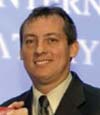
Ruben Restrepo
Technical Aspects of HFOV 101
Ruben D Restrepo MD RRT
FAARC, San Antonio TX
High Frequency Oscillatory Ventilation (HFOV) continues to challenge our technical abilities as clinicians at the bedside. This presentation will review the most important technical aspects of the oscillator to remember in the clinical setting.
11:05 A.M.–11:35 A.M.
Is There a HFOV Protocol That Works?
Henry E Fessler MD, Baltimore MD
Although a protocol-based approach has been extensively reported for conventional mechanical ventilation, it is not the case with HFOV. This lecture will describe the key elements in the implementation of a HFOV protocol at the bedside.
11:40 A.M.–12:10 P.M.
HFOV: Clinical Applications
Stephen Derdak DO Col USAF MC,
San Antonio TX
Use of HFOV in conditions such as pregnancy, pulmonary fibrosis, and increased intracranial pressures presents new challenges in the critical care setting. This lecture summarizes some of the important modifications to the HFOV strategy required to adequately manage this condition.
RESPIRATORY CARE OPEN FORUM #5
VAP—Home Care—Transport
12:30 P.M.–2:25 P.M.
Clinicians present the results of their scientific studies. Abstracts with a similar focus are clustered into a symposium to encourage discussions and interactions among investigators and observers; posters expand the information presented.
- A Bench Study to Determine the Feasibility of Using the Bronchtron HFV With the INOvent Delivery System for Administration of Nitric Oxide During Inter-Hospital Transport—Tim Macknight RRT-NPS, Salt Lake City UT
- Accuracy of the Oxygen Cylinder Duration Calculator on the LTV-1000 Transport Ventilator—Thomas C Blakeman RRT, Cincinnati OH
- Validation of Recommended Patient Assessment and Titration of Oxygen Conserving Devices—Louis M Kaufman RRT-NPS, Germantown MD
- A Multicenter/Multidisciplinary Team Reduces Ventilator Associated Pneumonia—Travis W Collins RRT, Walton KY
- Management at Home of Chest Infection in Neuromuscular Disease Patients Submitted to Long-Term Mechanical Ventilation—Andrea Vianello MD, Padova Italy
- Are we Able to Provide a Steady Oxygen Flow on Non Invasive Mechanical Ventilation Systems With a New Generation Oxygen Concentrator?—Rodrigo S Adasme RRT-NPS CRT PT, Santiago Chile
- Comparison of 4 Portable Oxygen Concentrators—Robert L Chatburn RRT-NPS FAARC, Cleveland Heights OH
- Effects of a Protocol Bundle on the Evidence of Ventilator Associated Pneumonia in the Cardiac Surgical Unit: a Prospective Study—Savitha Joseph BSc, Kochi Kerala India
- Maximizing the Impact of the Vent Bundle—Thomas A Madrin RRT, Macon GA
- Ventilator Associated Pneumonia (VAP) in Korean ICUs—Kook-Hyun Lee PhD MD, Seoul Republic of South Korea
- Respiratory Clinician (RC) Efficiency Training and Tracking in Home Care—Nicholas J Macmillan RRT FAARC, Bargersville IN
- Ventilator Associated Pneumonia (VAP): in Accordance With the Pennsylvania Healthcare Cost Containment Council (PHC4) Initiatives to Reduce VAP Rates at Thomas Jefferson University Hospital (TJUH): an Update—Bhaskar R Nuthulaganti RRT MBA, Philadelphia PA
- Snapshot of Transport Respiratory Therapist Practice—Dawn Filippa RRT EMT-P, Hartford CT
RESPIRATORY CARE OPEN FORUM® Symposia supported by an unrestricted educational grant from 18 Symposia during the 4 days of the Congress: |
|
| Saturday, #1–4 | Sunday, #5–8 |
| Monday, #9–14 | Tuesday, #15–18 |
10:30 A.M.–12:15 P.M.
Advances in Bronchoscopy
10:30 A.M.–11:05 A.M.
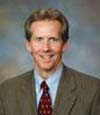
Eric Edell
Interventional Bronchoscopy
Eric S Edell MD
Rochester MN
There have been many recent innovations in the treatment of endobronchial disease, foreign bodies and endobronchial obstruction. This lecture will discuss the techniques used by the interventional bronchoscopist.
11:05 A.M.–11:40 A.M.
Endobronchial Ultrasound Bronchoscopy
Lois A Rowland RRT-NPS RPFT, Richmond VA
This presentation will describe the EBUS technology, diagnostic advantages over blind transbronchial biopsies, and the role of the respiratory therapist assistant.
11:40 A.M.–12:15 P.M.
The Diagnostic Advantages of Using Endobronchial Ultrasound Bronchoscopy
Eric S Edell MD
Bronchoscopes equipped with an ultrasound probe generate images of extra-bronchial structures and can improve the yield of lymph node sampling for diagnosis and staging of thoracic tumors. This lecture will review how this equipment is used to help diagnose disease not diagnosed using bronchoscopes without ultrasound.
11:30 A.M.–12:15 P.M.
Percutaneous Tracheostomies
Bill D Cohagen RRT FAARC, Phoenix AZ
This presentation will provide you with an overview of percutaneostomies tracheostomies. This presentation will explain in detail the role of the respiratory therapist in performing this procedure.
1:00 P.M.–5:05 P.M.
AARC's 24th New Horizons Symposium®
Neonatal Respiratory Care
Clicke here for all information.
1:00 P.M.–1:30 P.M.
Respiratory Care Implications of Sepsis
Charles G Durbin Jr MD FAARC, Charlottesville VA
Sepsis with acute organ dysfunction is a leading cause of death in the ICU. Early Goal Directed Therapy (EGDT) can significantly decrease hospital mortality for these patients. The speaker will describe the role of the RT in successful implementation of evidenced-based protocol for septic patients.
1:00 P.M.–1:45 P.M.
Subacute and Home Care Ventilatory Support of the Spontaneously Breathing Patient
Billy M Lamb RRT CPFT, Fenton MO
Review the spontaneous breathing process for patients supported with mechanical ventilation. Discuss challenges of supporting spontaneous breathing efforts and achieving patient ventilator synchrony. Discuss weaning adjuncts, including trans tracheal assisted ventilation.
1:00 P.M.–2:30 P.M.
PEEP: Bringing the Evidence to the Bedside

Ira Cheifetz
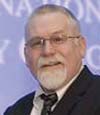
Dean Hess
Ira Cheifetz MD FAARC
Durham NC
Dean Hess PhD RRT FAARC
Boston MA
Despite decades of research and tremendous experience in all patient populations, PEEP remains a very controversial topic. How do you set PEEP for your patient with acute lung injury? It is very likely that your answer will differ from your colleague. The effects of PEEP titration varies from patient to patient and even over time for the same patient. This unique session will blend an interactive audience response case-based approach with an in-depth review of the medical literature. Is your practice supported by the medical literature? Come find out!
1:00 P.M.–2:35 P.M.
Managing Other Services
1:00 P.M.–1:45 P.M.
Respiratory Therapist Managing an Emergency Department
Kevin McQueen RRT, San Marcos CA
Describes the ins and outs of being a respiratory therapist and the operations manager of the second busiest emergency department in San Diego County; how RTs can manage nurses and other healthcare providers; and why RTs shouldn't limit their thinking to only positions related to respiratory care.
1:50 P.M.–2:35 P.M.
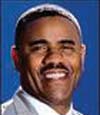
Vernon Pertelle
Respiratory Therapist as a Hospital Administrator Managing Multiple Departments
Vernon R Pertelle MBA RRT LVN
Oceanside CA
Details the challenges and rewards when a respiratory therapist became a hospital administrator. What is it like to be an Assistant Vice-President/Senior Director as a respiratory therapist?
1:00 P.M.–3:10 P.M.
Management 2008
1:00 P.M.–1:40 P.M.
Marketing Your Respiratory Care Services
Janice J Thalman MHS RRT FAARC
Durham NC
Discusses how to capture the unique strengths and characteristics offered by your respiratory care services. Elaborates on how to market those unique strengths to influence the future scope of practice within your facility, influence hospital administration, and recruit and retain prospective respiratory therapists.
1:45 P.M.–2:25 P.M.

Susan Rinaldo-Gallo
CPT Coding for Respiratory Care Services
Susan Rinaldo-Gallo MEd RRT
Durham NC
Details the CPT Code approval process, successes and failures; discrepancies between coding and reimbursement; Part A and Part B reimbursement; and actual coding case studies taken from the AARC coding list serve (names removed of course)
2:30 P.M.–3:10 P.M.
Medical Direction—The View From Both Sides
Janice J Thalman MHS RRT FAARC and Neil R MacIntyre MD FAARC, Durham NC
Looks at both sides of the relationship between a medical director and a respiratory department and how to best develop that relationship for successful clinical outcomes and departmental operations. Discusses the need for such a relationship, the desired objectives from each party’s perspective and the appropriate roles for each.
RESPIRATORY CARE OPEN FORUM #6
Diagnostics, Can You Tell?—Part 1
12:30 P.M.–2:25 P.M.
Methemoglobin Production in Normal Adults Inhaling Intermittent High Concentrations of Nitric Oxide—Chris C Miller PhD, North Vancouver BC Canada
Gaseous Nitric Oxide Bactericidal Activity Retained During Intermittent High-Dose Short Duration Exposure—Chris C Miller PhD, North Vancouver BC Canada
ealth Care Related Pneumoniae, Treatment Management With Distal Protected Sample Under Fiber Optic Exam—Philippe Goutorbe MD, Toulon France
Video-Assisted Laryngoscopy May Decrease Esophageal Intubation in an Emergency Medicine Residency Program—Joseph B Shepherd RRT, Raleigh NC
The 50+ Requirements That You Can Use to Document That a Spirometer Being Considered for Purchase Actually Complies With the ATS-ERS 2005 Spirometry Standard—Alan J Moore, Birmingham United Kingdom
Comparison of Functional Capacity of Patients With COPD and Post-Tuberculosis Lung Disorders—Adesoji R Adedoyin MSc PhD, Ile-Ife Nigeria
Radial Arterial Line Dwell Time and Maintenance Interval Non Specific—Chuck Ramirez Jr RRT, Phoenix AZ
Is the Fat Free Mass Related to the Change in Oxygen Uptake From Baseline to Peak of Exercise in Different Respiratory Diseases?—Russell Sabbag CRT CPFT, Boston MA
Work Rate: a New Parameter for Distributing Respiratory Therapy Workload—Susan Gole RRT, Cleveland OH
Are Plethysmographic Lung Volumes Measurement Affected by the Sequence of FRC-SVC or SVC-FRC Maneuvers?—Marshall Krashin RRT MS, Brighton MA
Measurement of Oxygen (PO2 ) in Human Blood Following Infusion of Dilute Hydrogen Peroxide—Matthew J O’Brien RRT RPFT, Madison WI
Comparing Predictions of Maximum Aerobic Capacity Using Submaximal Exercise Procedures in a Small Sample of University Students—Jennifer Chism RRT-NPS, Louisville KY
Comparison of Pulse Oximetry Utilizing a Forehead Probe Versus Finger Probe in Patients With Lung Dysfunction Undergoing Simple Step Exercise—Alan Zeccardi MS CRT CPFT, Rochester MN
Comparison of a Micro-Fuel Cell Oxygen Analyzer With a Zirconium Cell Oxygen Analyzer During Exercise With a Breath by Breath Gas Exchange System—Charles McArthur RRT RPFT, Mankato MN
Calculation of Hi-Ox 80 Mask FIO2 by Using a Modified Version of the Alveolar Air Equation—Courtney DeShon RRT, Springfield MO
Repeatability of Bedside Functional Residual Capacity Measurements—Lara Brewer MS, Salt Lake City UT
1:00 P.M.–4:40 P.M.
Sleep A to…ZZZZZ
1:00 P.M.–1:20 P.M.
What Every Respiratory Therapist Should Know About Polysomnography
Atul Malhotra MD, Boston MA
A brief overview of polysomnography. How to make sense of a sleep study report, what is normal and what is abnormal.
1:25 P.M.–1:45 P.M.

Peter Gay
Sleep-Disordered Breathing in Patients with COPD
Peter C Gay MD
Rochester MN
Presents issues related to sleep-disordered breathing in patients with COPD. Identification and treatment of sleep-disordered breathing in patients with COPD.
1:50 P.M.–2:10 P.M.
Sleep Disordered Breathing in Patients with Congestive Heart Failure
Atul Malhotra MD
Describes issues related to sleep-disordered breathing in patients with congestive heart failure. Identification and treatment of sleep-disordered breathing in patients with congestive heart failure.
2:15 P.M.–2:35 P.M.

Paul Selecky
Sleep-Disordered Breathing in Women
Paul A Selecky MD FAARC
Newport Beach CA
An overview of issues related to sleep-disordered breathing in women. Identification and treatment of sleep-disordered breathing in women.
2:40 P.M.–3:00 P.M.
Sleep-Disordered Breathing in the Perioperative Period
Atul Malhotra MD
An overview of issues related to sleep-disordered breathing in the perioperative period. Identification and treatment of sleep-disordered breathing during the perioperative period.
3:05 P.M.–3:25 P.M.
Sleep in the ICU and interactions with Mechanical Ventilation
Sai Parthasarathy MD, Tucson AZ
An overview of issues related to sleep in the ICU, in particular in patients receiving mechanical ventilation. Identification and treatment of sleep-disordered breathing in mechanically ventilated patients.
3:30 P.M.–3:50 P.M.
Strategies to Improve CPAP Adherence in the Home and in the Hospital
Peter C Gay MD
A discussion of issues related to adherence to CPAP therapy in patients with sleep-disordered breathing. Techniques that can be used to improve adherence in the home. Also, strategies that can be used to improve adherence when the patient is admitted to the hospital.
3:55 P.M.–4:15 P.M.
New Airway Pressure Technologies and Interfaces
Sai Parthasarathy MD
A plethora of new equipment, specifically airway pressure technologies and interfaces, has become available for treatment of sleep-disordered breathing. Potential benefits of this equipment will be addressed.
4:20 P.M.–4:40 P.M.
Reimbursement Issues Related to CPAP Therapy
Peter C Gay MD
A discussion of the reimbursement issues related to sleep studies (attended and unattended) and related to providing technology for treatment of sleep-disordered breathing.
2:00 P.M.–3:35 P.M.
Using the Benchmarking Tool
2:00 P.M.–2:45 P.M.
Got Enough Staff? Prove It!
Bill Dubbs MEd RRT FAARC, Irving TX
Productivity measurement will be compared and contrasted to benchmarking as required tools to evaluate the adequacy and effectiveness of staffing levels. Foundational concepts as well as ideal and undesirable characteristics of both tools will be presented.
2:50 P.M.–3:35 P.M.

Richard Ford
Benchmarking-Transforming Data
Richard M Ford RRT FAARC
San Diego CA
Compares the action OI to the AARC benchmarking system and discusses the matrix for the AARC system.
RESPIRATORY CARE OPEN FORUM #7
Ventilators & Ventilatory Techniques—Part 3
3:00 P.M.–4:55 P.M.
Clinicians present the results of their scientific studies. Abstracts with a similar focus are clustered into a symposium to encourage discussions and interactions among investigators and observers; posters expand the information presented.
Width Versus Height for Predicted Body Weight Calculation—Anthony J Asciutto RRT, Durham NC
Incidence of Specific Acid-Base Disorders Seen in the Medical and Surgical Intensive Care Units at a University-Based Medical Center—Ruben D Restrepo MD RRT FAARC, San Antonio TX
The Importance of Ventilator Waveforms—Abdulrahman M Alshamrani RRT BSRC, Toledo OH
Effect of CPAP Interface Desensitization Prior to the Titration Study on CPAP Compliance—James P Stegmaier RRT-NPS RPFT CCM, Lorain OH
Airway pH, Esophageal Impedance/pH, and Tracheal Pepsin During Mechanical Ventilation—Michael D Davis RRT, Charlottesville VA
Comparison of Negative Inspiratory Force Measurements Using the Dräger XL Ventilator, the Ventrak 1550 Monitor, and the Magnahelic Pressure Gauge—Mark Siobal RRT, San Francisco CA
Iloprost Improves the Cardiac Hemodynamic Parameters of Pulmonary Artery Hypertension in Open Heart Surgery—Felix Khusid RRT-NPS RPFT, Brooklyn NY
Measurement of Expiratory Valve Resistance and its Effect on T Low Using APRV Mode and a Low-Compliance Lung Model—Misty Starnes RRT, Springfield MO
Accuracy of Delivered Tidal Volume Using Adaptive Support Ventilation on the Hamilton G5 When Ventilating an Electronic Test Lung Simulating COPD and ARDS—Hiroyuki Noguchi, Tokyo, Japan
Use of High Frequency Oscillatory Ventilation in Neurocritical Care Patients With Acute Brain Injury & ARDS—Stacey N Bennett MSN ACNP, Wake Forest NC
Initial NPPV Settings May Be a Useful Predictor of Outcomes—Carol T Spada RRT, Boston MA
Three Magnetic Resonance (MR) Environments and the MR Conditional Servo-i Ventilator—Kenny Winn RRT, Charlotte NC
Design and Evaluation of a Semi-Closed Circuit for Noninvasive Ventilation With Heliox—Karel Roubik MSc PhD, Kladno Czech Republic
Transportability of High Frequency Oscillatory Ventilation—Brian K Walsh RRT-NPS FAARC, Boston MA
An Evaluation of Turbine-Based Non-Invasive Ventilator Performance—Robert L Joyner Jr PhD RRT FAARC, Salisbury MD
2:30 P.M.–4:25 P.M.
Baccalaureate Degrees in RC: The Why and How
2:30 P.M.–3:15 P.M.

Ellen Becker
Why Do Respiratory Therapists Pursue Baccalaureate Degrees?
Ellen A Becker PhD RRT-NPS AE-C
Brooklyn NY
Hear the reasons why respiratory therapists who were already working in the profession decided to complete their baccalaureate degree. Find out what they expect to gain from the degree, how the degree affected their careers, the logistical steps that led to the degree, and whether or not they found the experience valuable. This presentation is based upon numerous interviews of working practitioners who completed a baccalaureate degree to further their goals in the respiratory care profession.
3:20 P.M.–4:25 P.M.
Moving Forward: The Pursuit of Higher Education in Respiratory Care
Kimberly Clark MBA RRT-NPS, Charlotte NC
As respiratory therapy technical and professional roles continue to evolve and expand, the need for higher education beyond the associate’s degree is essential. This presentation will provide information regarding the development and implementation of a university-based baccalaureate degree completion program in respiratory therapy and its transition to distance education. In addition, this presentation will include the many challenges and opportunities encountered throughout the process.
2:35 P.M.–4:05 P.M.
Why Do We Need Research?
Bruce K Rubin MD MEngr MBA FAARC, Winston-Salem NC
What is evidence-based medicine? Why research? Isn’t clinical experience sufficient? This presentation by one of the most productive researchers in the field of respiratory care will answer these questions. The rationale behind an evidence-based approach to medicine and the key elements of scientific research will be clearly presented. The information presented is essential for all clinicians regardless of whether or not you perform research.
3:25 P.M.–4:10 P.M.
Adjuncts to Home CPAP Therapy: Where’s the Evidence?
Billy M Lamb RRT CPFT, Fenton MO
Discuss currently available Home CPAP therapy adjuncts, including EPR, C-Flex and other breath modifiers. Explore evidence to support clinical application of these and other features.
3:45 P.M.–4:30 P.M.
Continuing Care-Rehabilitation Section Membership Meeting
Debra M Koehl MS RRT-NPS AE-C/Chairing
Section members meet to determine their needs and priorities, as well as how to use the AARC resources to accomplish them. All Congress attendees are invited.
RESPIRATORY CARE OPEN FORUM #8
Asthma & COPD—They Are Different
3:00 P.M.–4:55 P.M.
Clinicians present the results of their scientific studies. Abstracts with a similar focus are clustered into a symposium to encourage discussions and interactions among investigators and observers; posters expand the information presented.
The Effects of Swimming Intervention for Children With Asthma—Jeng-shing Wang MD, Taipei Taiwan
Role of Management Pathway in the Care of Advanced COPD Patients in Their Own Homes—James L Clark Jr CRT, Catskill NY
A Ten-Year Emergency Room Asthma Education and Follow-Up Program—Chris Garvey MPA MS RN AE-C, Daly City CA
An Assessment of a Pilot Asthma Education Program for Childcare Providers in a High Prevalence County—Suzanne Saville DDS MPH, Rockville MD
Consistent Approach to Asthma Education Reduces Hospital Re-Admission Rates—Edward Conway RRT, Cincinnati OH
Development of an Algorithm for the Detection and Management of Individuals With Alpha-1 Antitrypsin Deficiency—Valerie F Naegele RRT, Oceanside CA
Team Building: Closing the Gaps in Asthma Education—Tamara L Burton MS RRT, Towson MD
High Flow Nasal Cannula Application in Treatment of a Severe Asthma Exacerbation—Patricia Dailey RRT, Springfield MA
Monitoring Asthma Via Mobile Phones: an Innovative Telemedicine Application—Bree E Holtz MSc, East Lansing MI
Assessment of Diaphragmatic Thickness and Excursion in Asthmatic Children and Its Correlation With Angiogenin Level and Pulmonary Functions—Eman M Fouda MD, Abha Saudi Arabia
A Survey of Heliox Use in Academic Emergency Departments in the United States—Dean R Hess PhD RRT FAARC, Boston MA
Administration of Heliox and Bronchodilator Aerosol via High Flow Nasal Cannula in a Severe Asthmatic—Patricia Dailey RRT, Springfield MA
Non Invasive Ventilation in Acute Asthma: a Randomized Control Trial—Dheeraj Gupta MD DM, Chandigarh India
4:10 P.M.–5:00 P.M.
Mulitcenter Studies—Implications for the RT at the Bedside
Douglas F Willson MD, Charlottesville VA
Have you ever been asked to obtain data or make ventilator changes because of a clinical study? Ever wonder why in the world you should spend your valuable time complying with these requests? This session will review several multicenter clinical trials that directly affect respiratory therapist at the bedside. This presentation will provide the clinician with a valuable perspective as to why these studies are essential to further improving the care that we provide to our patients of all ages on a daily basis.
4:15 P.M.–5:15 P.M.
Noninvasive Ventilation—Lessons Learned from the 2008 Journal Conference
Richard M Kallet MSc RRT FAARC, San Francisco CA
As the summarizer at the recently held Respiratory Care Journal Conference on noninvasive positive pressure ventilation, Mr. Kallet is well qualified to present the key elements of each of the papers presented at the conference, as well as how they should affect the practice of every respiratory therapist.